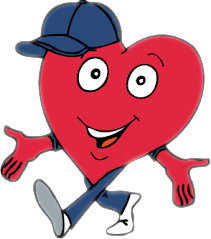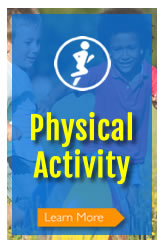References:
For Parents
CARDIAC Interventions
The WV CARDIAC Project is a project for Kindergarten, 2nd and 5th grade students. The WV CARDIAC Project can help you and your family learn about health risk factors and things you can do to improve your family’s nutrition and physical activity habits. We focus on surveillance, interventions, and research.
Parents are essential in helping the mission of the WV CARDIAC Project become a reality. We want to help you as you help your family live their healthiest lives. You can follow us on social media to stay informed with the latest news and research as well as practical tips for you and your family. Additionally, you can use the resources provided below to help your family live a healthy lifestyle. Just click on the topic you are most interested (i.e. nutrition, physical activity, etc.)

Watch this video to learn more about what happens during the screening process.
The WV CARDIAC Project uses weight and height to calculate your child’s Body Mass Index (BMI) and BMI percentile. The BMI percentile indicates if your child is underweight, a healthy weight, overweight, or obese. If you child’s BMI percentile falls outside of the healthy weight range, your health care provider can perform further assessments to determine if your child’s weight status is a problem. You can use this BMI calculator from the U.S. Centers for Disease Control and Prevention (CDC) to determine your child’s BMI and BMI weight status category.
To view results from previous screening years, click here.

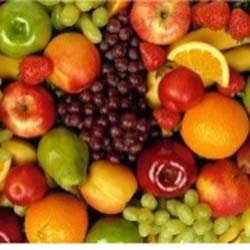
Provide plenty of vegetables, fruits, and whole-grain products1
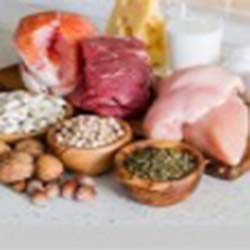
Choose lean meats, poultry, fish, lentils, and beans for protein1

Include low-fat or non-fat milk or dairy products, such as cheese and yogurt1

Encourage kids to eat a healthy breakfast and lunch whether at home or at school1

Review school menus with your kids and encourage them to try new foods1

Model healthy eating at home1

Drink plenty of water2
Q&A
Q. My child does not like fruits and vegetables. What should I do? Helpful tips are provided here: Help! My Child Refuses To Eat Fruits And Vegetables! Top 10 Expert Tips Every Parent Should Try - Half Your Plate
Q. My child does not like to drink water. What should I do? Helpful tips are provided here: What Do You Do When Your Child Won't Drink Water? 9 Tips
Q. I want to serve a balanced meal for my child, but I do not have time to do that for every meal. What should I do? Helpful tips are provided here: Timesaving tips for cooking healthy meals - Mayo Clinic News Network
Additional Resources:
- MyPlate Tools
- Action for Healthy Kids – Healthy at Home
- WV PEIA Healthy Recipe Cookbook
- Size Up Serving Guide
- Kids Eat Right
- WV Food and Farm Coalition
- SNAP Stretch


Make sure children and teens get enough sleep
Children and teens need plenty of sleep each day (6-12 years old = 9-12 hours; 13-17 years = 8-10 hours). Getting enough sleep can help a child stay healthy, maintain a healthy weight, and promote a healthy mind.

Reduce screen time for non-educational use
Limited screen time is critical for children to stay physically and mentally healthy and achieve academic success.
Reference:
Q&A
Q. My child struggles to go to bed on time. What should I do? Helpful tips are provided here: 4 ways to help your child get enough sleep - Harvard Health.
Q. My child gets upset when I try to manage their screen time. What should I do? Helpful tips are provided here: Tips for Reducing Screen Time, Reduce Screen Time, NHLBI, NIH
Additional Resources:
- Active Southern WV
- Action for Healthy Kids
- American Heart Association
- 1,000 Hours Outside
- Healthy Schools Network
- Hip Hop Public Health
- CDC Healthy Schools
- WVU Medicine Children’s Medical Weight Management Clinic
- CAMC HealthyKids Wellness and Weight Management Program
- Keys 4 Healthy Kids
Weight management programs:
- WVU Medicine Children’s Medical Weight Management Clinic
- AMC HealthyKids Wellness and Weight Management Program

Children and teens should be physically active for at least 60 minutes each day. Include the following types of activities1:

- Aerobic activity – Running, jogging, biking, hiking, walking, jumping rope, swimming, dancing etc.
- Bone strengthening activities – Running, jumping, hopping, etc.
- Muscle-strengthening activities – Climbing, push-ups, curl-ups, squats, etc.
You can do the following to help children and teens be physically active1:
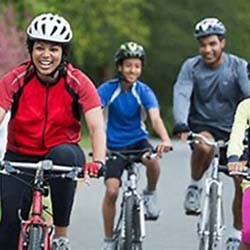
- Make physical activity part of your family’s daily routine by taking walks or playing active games together.
- Help children and teens find fun activities to do on their own or with friends and family, such as walking or riding bikes.
- Take young people to places where they can be active, such as public parks or playgrounds, community baseball fields, or community basketball courts.
- Encourage your child to participate in school or community physical activities or sports programs.
Reference:
Q&A
Q. My child does not want to do any physical activity. What should I do? It is ok to start with 5 minutes of physical activity. As a child gets used to it, you can help the child gradually extend the time of physical activity.
Q. I do not have time to take my child to go somewhere for physical activity. What should I do? There are physical activity options that you can do at home (e.g., fitness, yoga, Pilates, or dance videos on YouTube or jump rope). More activity ideas at home can be found here: Active Academics - Learning on the Move!
Q. My child prefers playing video games or watching TV to being physically active. What should I do? Use screentime as a reward for being physically active. For example, you can set a rule that if a child engages in physical activity for 60 minutes, they can have 30 minutes of screen time.
Additional Resources:
- Active Academics®
- Active Academics® - Active @ Home
- OPEN - Tools for Creating an Active Home
- SHAPE America – 101 Tips for Family Fitness Fun
- SHAPE America National Physical Education Standards Video – educate yourself on what your child is learning in PE
- Active Schools – A Guide to Engaging Parents in School Physical Education and Physical Activity
- Action for Healthy Kids – PE, Physical Activity and Play
- The Walking Classroom
